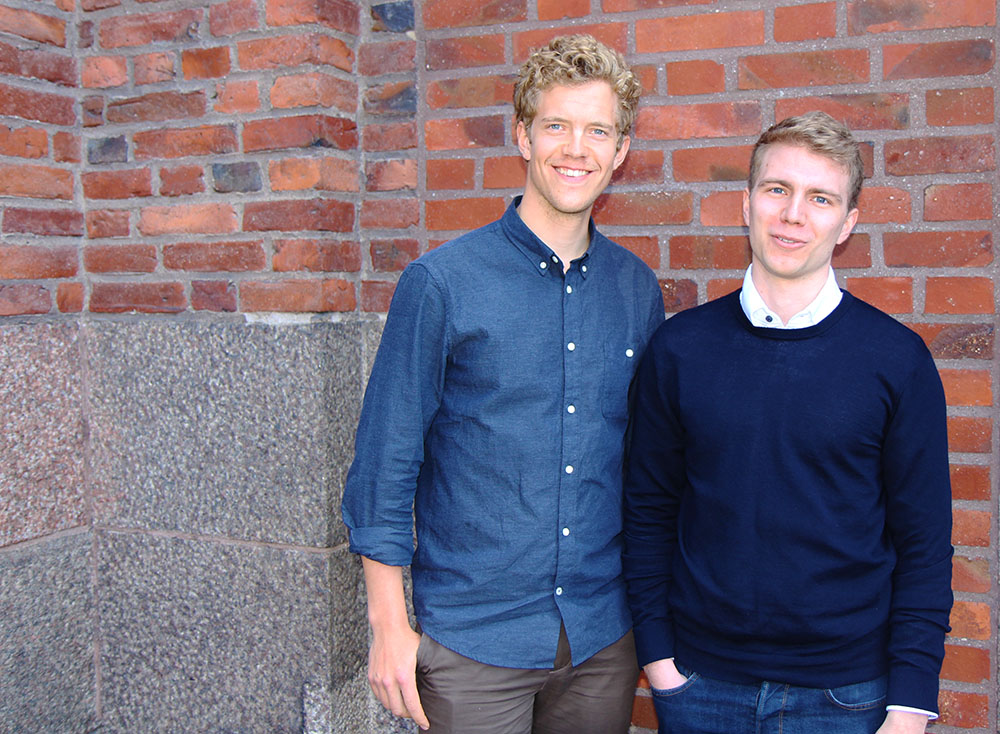The idea that can save thousands of hours for KTH PhD students

Every year, students at KTH take thousands of tests, and it comes down to the PhD students at KTH to mark them, a job that takes several days per person each time. The winners of the KTH Innovation Challenge PhD Idea of the Year have a solution to the problem, which can save thousands of hours all over the world.
In the spring KTH Innovation went looking for the best idea from a KTH PhD student, where those who submitted their idea could win 50 000 SEK in funding. Now, it’s time to reveal the winners.
Petter Lind, Carl-Magnus Everitt, and August Brandberg are all PhD students at KTH. After the last round of marking exams, they agreed that there must be a better way of getting the work done. While gathered around the coffee table, they realized that by combining various existing technical solutions, they could make the dull work easier, and get more time for what they’d rather focus on: their research.
Every year, students write over 100 000 exams at KTH, and each exam is on average 11 pages, says August. For us PhD students, it amounts to a whole lot of hours.
Apart from the fact that marking each exam individually takes a lot of time, it also means that you risk marking exams differently.
When you start grading, and then discover a unique solution in exam number 200 you’re in trouble, says Petter. You can’t go back and change them all, and you’ll probably find other unique solutions along the way.
Today, all exams taken at KTH are scanned after being handed in. The team’s solution comes down to using machine learning to group exams with similar answers, so that more exams can be marked at the same time. In that way, the number of individual exams that need to be marked is drastically reduced. From 550 individual exams, the number can decrease to as little as 100 or even 20 when similar answers can be graded simultaneously.
The solution that the team will now start building with support and funding from KTH Innovation, is implemented after the exams are scanned. At that stage, the information exists as text on an image, which means that the first step is finding text symbols and then translating them to mathematical symbols. Once you have identified the symbols, the next step is giving them meaning; if there’s an equal sign, the computer needs to understand that it’s looking at an equation.
The next step is sorting and grouping similar answers, and visually showing that a number of solutions are related. Those who have answered the question in a similar way get the same score. Similarily, two students with different solutions meaning the same thing will get the same score.
Actually, we won’t really develop any unique or new technology, but we implement existing solutions in a new way, says August.
An added bonus is that it becomes easier to see trends in the students’ answers. You can for example see what the most common mistake was each year and how answers differ from one year to the next. In that way, you can ensure the quality of the course, and also explain to the students why they were given a certain grade.
Writing exams digitally is not an option right now.
As researchers, we still use pen and paper, says Petter. It gives you better flow, and it’s faster.
Their solution is not just meant for KTH; many different universities, especially in Western Europe design their exams in similar ways, and additionally the solution is not only limited to comparing equations, but could be implemented in many different fields. About the future, Petter says:
Never say never, after all, Google was started by two PhD students.

